Press Release | December 26, 2019
Monster Energy Honda explains how navigation is the key to a successful Dakar race.
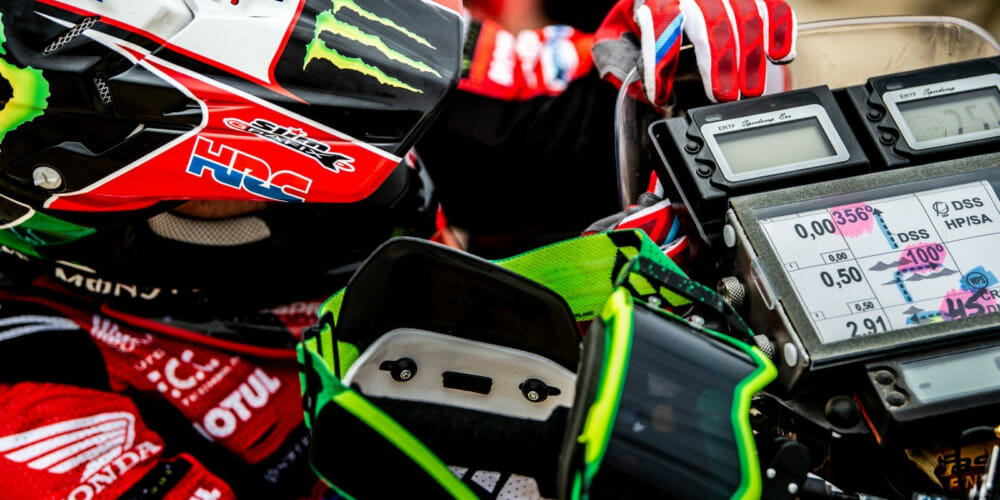
Riding skills are not enough to survive the Dakar Rally. Navigation is the key: The only way to find your way out of the desert is contained in a roll of paper full of notes, arrows, and stylized drawings.
Back in the old days, a compass and geographic maps were the faithful allies of every rally rider. GPS changed the face of the toughest rally in the world, and the roadbook became their bible.
“It all started with the introduction of the GPS,” Monster Energy Honda general manager Ruben Faria says. “With the evolution of technology and increasing complexity of the roadbooks, the map man became a key figure.”
Map Man: Beloved by the riders, hated by the race organizers, the “map man” is one of the most discussed players of the modern Dakar Rally. In the wise hands of an expert, a 12-meter road book full of notes can become a “helicopter” ride over a special stage, a three-dimensional photograph that shows, kilometer after kilometer, the pitfalls competitors will tackle the following day.
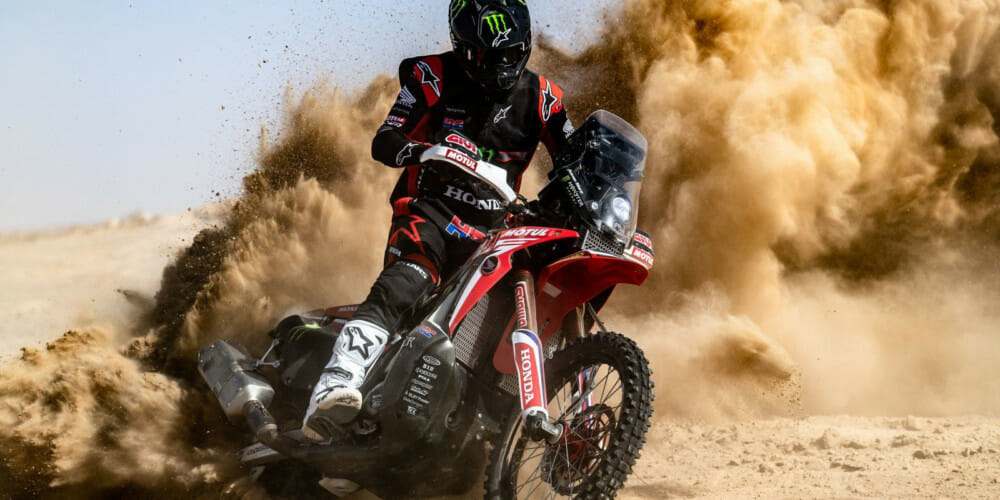 HRC Rider Aaron Maré in pre-Dakar shoot.
HRC Rider Aaron Maré in pre-Dakar shoot.
All factory teams have one, either at the bivouac or working remotely in Europe. All you need is a strong satellite signal. As soon as the organizer delivers the roadbook, the map men start to transcribe the notes at a similar speed of a rider—about 260 kilometers in 3 hours—using a program like Google Earth. The transcription is followed by analysis with maniacal attention to way points.
The riders cannot memorize a 400-kilometer special stage, but they can focus on critical passes and tricky points. This is crucial support for a rally that year after year has become more of a sprint race.
Revolution: In the constant search to keep the adventure alive, to reduce the speed and gap between the factory and private riders, this year the organizers have introduced radical changes that could deeply affect the final classification. “For the first time this year, the symbols in the road book boxes will be printed in color,” Faria explains. “This will significantly reduce the preparatory work for the following stage, allowing pro riders to recover more and amateurs to focus more on the maintenance of their vehicles.
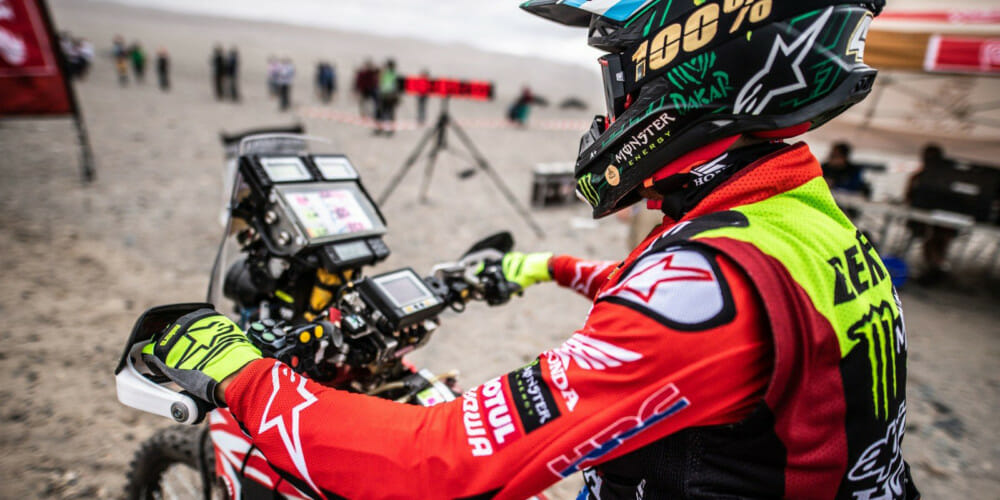 Kevin Benavides at the 2019 Dakar
Kevin Benavides at the 2019 Dakar
Moreover, “For at least four stages, the road book will be distributed directly in the morning at the start of the special stage.” A lottery? “On the contrary,” Faria says. “It’s true that the new system requires a bit of adaptation from the riders, who are used to visualizing the route while they are marking the road book. They also need to get familiar with the standard colors. I have been a professional rider and a co-driver, so I know what it means to prepare the road book and how helpful is to have a map man in the team.”
Back To The Roots: Like all the factory squads, Monster Energy Honda will have its map man on board, but the revolution has started. “I like the fact that road books will be given just before the stage,” Faria says. “If it works well, I think the future is to adopt it. In a way, it is a return to the origins. We saw it in the Morocco Rally when the road book was delivered in the morning, and it completely changed the race. Adopting this system, the Dakar returns to be more difficult and more adventurous. With the machines being lighter and faster, the race is getting more and more dangerous.
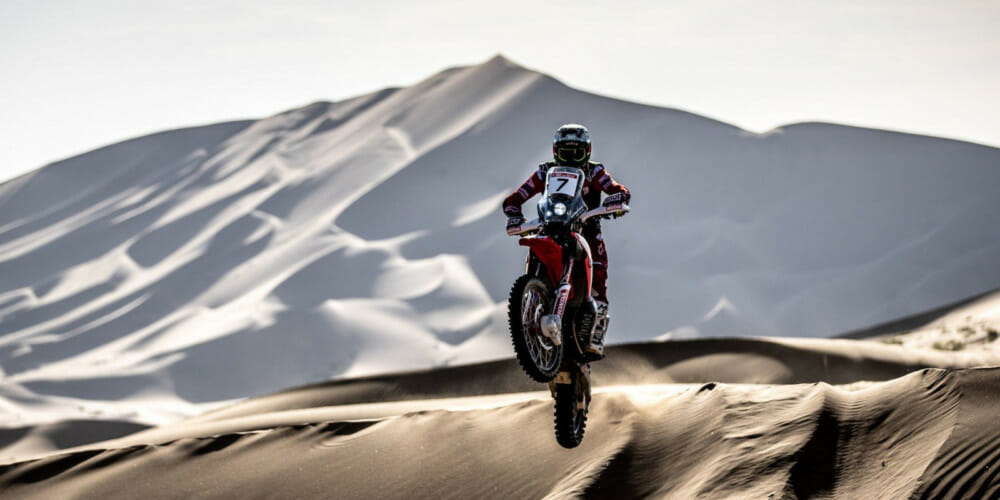 Silkway Rally, Russia
Silkway Rally, Russia
“Delivering the road book in the morning will help to slow the pace, as the riders need to focus more on the notes,” underlines Faria, whose best result in the Dakar is a second in 2013 in the bike category. He also has experience as co-driver for football coach André Villas Boas. Looking ahead to the future of rally raid, Faria says, “If the open car does a good recce two or three days before the stage and all the dangers are printed, this is a very good method because it makes the competition more equal between pros and amateurs, and it helps to reduce the speed. I expect the frontrunners will ride more together in the difficult passes. In a way, it is a return to the origins: The rider is called to use all his navigation skills and make the difference. It will also be interesting in terms of classification; a navigation mistake marks the fine line between winning and losing.”
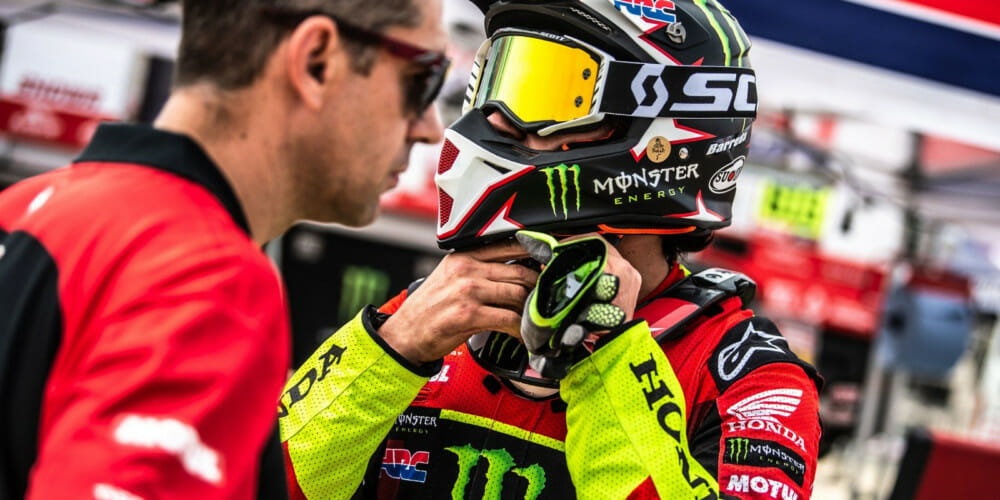 Joan Barreda at the 2019 Dakar
Joan Barreda at the 2019 Dakar
The Rider’s Side: “We tested this new system in the Morocco Rally, and it was quite a challenge,” Monster Energy Honda rider Kevin Benavides says. “Before it was easier to navigate as we had a general overview of the route. Now we discover it kilometer after kilometer. It’s all-new, and you need to slow down and focus more on the notes and understand the points. In the end, I think it’s the right direction to follow because it makes the rally more unpredictable. The rider can make the difference with his skills and, very important, it is the same for everybody.”
“We have always painted the road book to our likings, so it was enough to look at the road book, see yellow or red, and translate these colors automatically,” teammate Ricky Brabec adds. “Plus, when there were two or three notes in one, we could cut the road book and add the notes so we didn’t have to do the calculation. Now, when we arrive in a tricky area, we need to slow down and try to understand as fast as possible.”
For more information, visit monsterenergy.com